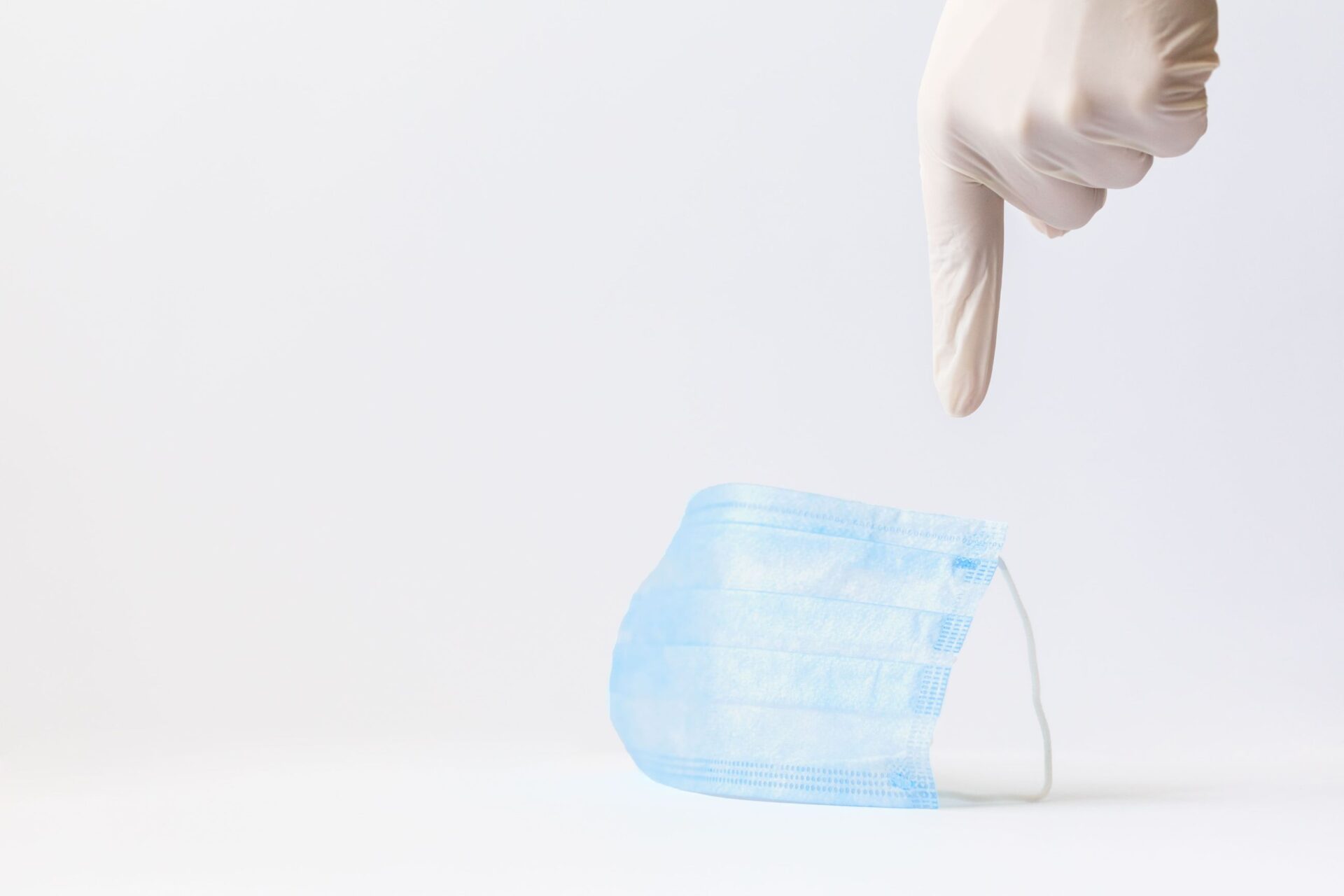Design By Covid: How to design the touchless workspace of the future?

Is the concept of office dead? Is remote working the new normal? Can office and public spaces be designed to contain similar outbreaks? How to approach physical and digital design for a pandemic-free planet?
Industrial Revolution: Typhus, TB, Spanish Flu, & more…

Almost 100 years ago, in the wake of the spring of 1918, the world witnessed probably one of the most lethal viral pandemics in the history of mankind which took 1/3rd of the global population under its clutch and left a staggering 50 million people dead. A viral carnage that continued for two straight years (1918-1920) is estimated to have killed more people than World War 1 and 2 combined.
If experts are to be believed, diseases of such dramatic infectious rates can be sourced back to the turn-of-the-century industrial revolution; a giant leap of modernization that had significant chunks of demography moving from the countryside to cities.
Though this period saw a rising belief in scientific endeavors – a fair transition from theology to biology, especially in cases of deadly outbreaks – the so-called “crowd” diseases (typhus, cholera, flu, etc), were still raging havoc in these newly established citadels of modernity.
1918 v. 2020: Pandemics then and now
Fast-forward to the wake of early spring of 2020 which found the planet yet again riddled with the wrath of an unseen nemesis, the novel coronavirus COVID-19, a submicroscopic strand of DNA or RNA enveloped by proteins and lipids that brought an entire civilization to its knees.
As debates, blame games, conspiracy theories, and WhatsApp forwards enrage trying to fixate the origin of this pandemic to a particular country or set of people, if history has taught us anything, a culture of high population and hyper-consumption is at the heart of this disaster.

While the planet struggles with an eternal lockdown and legions of office workers (estimated 900 million worldwide) confined to the 4 walls of their own home, economy, and in many cases work productivity has taken a serious hit. Working hours are turning more flexible, pets and toddler cries are encouraged during Zoom meetings, and informality is the new black.
But amongst this paradigm shift, the one question that lingers in everyone’s mind is – will we ever go to office? Will public life ever be the same? What is going to happen post-lockdown? What lessons can be learned from past pandemics to design the future?
Disease shapes cities – the public spaces, buildings, public transportation – in short, everything. Some of the most iconic innovations in urban planning and the mid-19th century sanitation & sewage systems were a design response to the belligerent cholera outbreaks. The current COVID-19 pandemic similarly joins the long list of highly infectious malaises such as the Spanish Flu and Ebola Virus Disease that have left a lasting impact on urban space designs.
Diseases, design, and NPIs

Researchers have strong reasons to believe that NPIs or non-pharmaceutical interventions hold the key in mellowing down the momentum of the virulence. NPIs comprise of anything that surmounts to deterring the spread of infectious diseases without any medication or vaccine (for which there is an easy 18-month long waiting period at the least, for COVID-19).
Quarantines and widespread lockdowns are one of the most impactful NPIs. From the design perspective, NPI can be any piece of innovation that furthers the cause of social distancing, increased hygiene, and decreased need for physical proximity. In simple words, any innovation that creates a shield against the attack of the pathogens is the one that is going to set the course for the future.
Think about your typical office-going day. You wake up, go for a jog, whip up breakfast, get on a means of transport, reach office, sit on your desk, have coffee and lunch with colleagues, go for team outings, so on and so forth. In all these daily interactions
- Can you keep a count of how many things or surfaces do you touch?
- How many times a day do you cross the now-required 6 feet barrier?
- The exact number of times someone sneezes or coughs in your vicinity?
- How many sanitizer-dispensing stations do you have in your office?
- What is the quality of the air that is circulating in the premises?
Kinda blows your mind to even begin pondering how casual and nonchalant the complete gamut of our behavior was before the hour hand struck COVID-O-clock. Barely three months ago, the biggest threats to human lives were cholesterol-clogged arteries and malignant tumors.
While these still tend to be the leading cause of mortalities across the globe, the perceived threat of the novel coronavirus is far bigger and insidious enough to warrant dramatic shifts in the atmosphere that surrounds us. And the first among many innovations, transformations, and metamorphosis is the design of the futuristic workspace.
Workspace design for the future
On March 27, 2020, the world saw an innovative approach to PropTech (property technology) as the design for the first-of-its-kind “contactless” office was submitted at an international webinar. This wholesome transformation plan was laid down by Estonian tech startup Ninja Solutions. How was the entire concept of touchless-ness adapted for a working space?

For starters, every door and elevator in the building can be accessed via a smartphone. Which means no touching doors, lift buttons, knobs, or any surfaces, at least at this stage. Additionally, there is no need for physical security as everything will be taken care of by a biometrically controlled contactless system. The designers believe that as COVID-19 will push companies to cut costs, in many cases, this design system can help in saving up on security expenditures.
Will this cause a compromise in security? Most likely not as ‘safety’ in today’s term is not just safety from physical threats but from biological ones too. Will this make the human security system obsolete? Not likely, as there will be requirements for some personnel staff to handle critical issues? What is the net benefit? Reduced human-to-interaction in the workspace. An NPI that counts.
What apart from these touchless elevators and digital transformation of security systems can expect in the post-COVID workspace design?
The 6-feet Workstation
Global real estate company, Cushman & Wakefield, have instantiated the idea of the now-required 6 feet distance between two individuals as a measure to curb the spread of airborne pathogens.

Designers and architects believe that this pandemic is going to turn our perception of workspace design by a complete 360 degrees, starting from the capacity of offices, to the allowable density of people at a given point of time, to even the office furniture.
The current standard of < 1.4 meters of desk space available on an average is the much-shrunken form of an erstwhile 1.8 meters. But with the current times, this trend will see a reversal. And this does not only mean wider desks. It also implies the following checks
- Regular virus safety scans
- Set of a clear and workable agreement for maintaining the sanctity of 6 feet rule
- Routing within and outside the office to ensure minimum human-to-human proximity
- A highly adapted and complete workstation that simulates the safety of WFH
- Trained employees who help follow these safety protocols
- Certification for the organizations that follow these rules to the T
Closed plans for workspace design
The status quo of the pre-COVID 19 eras was that cultural and intellectual collisions within a workspace were conducive to creativity, oneness, and community-building. However, in the post-COVID time zone, these collisions will be perceived from the post-apocalyptic lens of skepticism. Are physically open spaces really the requirement? Will people be only open to each other when there are no physical barriers?
While an open environment does have a liberating and optimistic tone of the new millennium, studies reveal that it is not a mandate for people to collaborate better. In fact, with a pronounced remote working tool intrusion in our daily desk jobs in the WFH format the collaboration has risen by a dramatic 142%!
With the number of apps that we are using to stay more and more connected to the inherent rising need of trying to stay abreast with the workflow shifts to maintain the same, if not more, productivity has resulted in better team coordination across sectors.
What does this mean in terms of design? Closed plans, closed cubicles- closed, protected, and safe workstations are here to stay. Not to mention the use of digital/remote working tools even when you are inside the office.
Signs & Behavioral Nudges
Caution: Please drive slowly. Careful: U-turn ahead. No Left Turn.

Bright red and yellow labels that are a part of road safety now will soon become a reality of your workspace post-COVID-19. Be it for using the lunchroom, coffee machine, water filter, or even the restrooms. There will be signs and signages everywhere that will keep nudging you to maintain the social distancing rule. The 4 walls of your workspace will soon be decorated with many soft and hard nudges.
Another protocol that might soon begin is the clockwise walking rule which is currently being used in most hospitals today. From frequent hand washing to making the mask a permanent part of your outdoor attire – your workspace ambiance will be a continued reminder of that.
If you are the head of an organization or a part of the admin, you must make this critical point the first thing to do when your office returns to its normal state again.
Contactless Pathways
As mentioned before in the case of the Estonian building plan, contactless pathways is the pressing need for the workspace of the future. A glimpse of this can be seen in Bee’ah Waste Management Company in UAE. A complete system designed to ensure no person in the building touches any surface. Doors opening and closing automatically using motion sensors and facial recognition and where elevators or even coffee can be summoned with the help of your smartphone.
Another interesting way technology can be easily incorporated into workspace design of the future is installing beacons and alerts in the phones that sound a warning bell when the six-feet distance rule is breached (and even for other protocol breaches as well).
Contactless pathways could also mean an organization-wide restructuring of corridors making them much wider with one-way foot traffic.
How to design a mobile app that brings large-scale transformation
Proximity Cards and Apps in workspace design
Also known as a Prox Card is a wireless and contactless manifestation of an “entry” card that doesn’t require any insertion into a machine or a card reader. It is sans magnetic strip and when held near an electronic reader for a moment they enable the identification of an encoded number. The reader usually produces a beep or other sound to indicate the card has been read.
As on March 6th, the Delhi government has called for a suspension of biometric attendance – a technology that depends on touch. Organizations and institutions worldwide have faced a similar ruling – no biometric attendance or fingerprint touch required in public space entry.
With such a huge restriction posed on biometric data collection, which is one of the most widely used digital “entry pass”, the need for a “touchless” digital entry pass is the need of the hour. And proximity cards could be the face of post-COVID digital attendance modules.
Another path-breaking innovation in the realm of touchless and infection-free attendance systems is “Incub XS”. This app developed by the 2017 start-up Incubsence, headed by Diksha Deo, has an in-built “tap-the-phone-and-mark-attendance” feature. This mobile app turns your smartphone into a proximity card, for that matter, and logs an entry much akin to a biometric pass.
As the touchless attendance system reaches a $500 million market just in India and a whopping 75% increase in the demand for such systems in the past 2-3 months, it can be safely said that these apps and cards are making their way into workspace design of the future.
Ideate, build, & design apps that address critical user pain points
Air Circulation

As per COVID researchers, “The risk of airborne transmission through small particles (< 5 microns), which may stay airborne for hours and can be transported long distances. Such small particles are generated by coughing and talking when larger droplets evaporate usually within milliseconds and desiccate. This mechanism implies that keeping 1-2 m distance from infected persons might not be enough. Infection risk can be high in crowded and poorly ventilated spaces. The size of a coronavirus particle is 80-160 nanometres and it remains active at common indoor conditions up to 3 hours in indoor air and 2-3 days on the room’s surfaces, explaining also another transmission route via surface (fomite) contact.”
Reports also reveal that the presence of the COVID-19 virus was detected in exhaust ducts of wards and COVID-positive zones. This again implies that the “1-2 meters distancing rule” might not be enough to prevent the spread altogether. These are the new set of building maintenance protocol ruled out for the post-COVID 19 workspace
- Ventilation must be on 24X7, even if it’s at a low rate.
- Ventilation of toilets at negative pressure to avoid oral-fecal contamination.
- Keep the windows and doors open more often.
- In case a room has been occupied by someone with a suspected or confirmed infection of COVID-19, it should be aired naturally for at least 3 hours.
Following these rules will no longer be an option, but a strict mandate once the office spaces open after the COVID-19 holocaust.
Lessons learned from history

The Black Death of the 1300s that is estimated to have killed almost 30-60% of Europe’s population is said to have sparked the creation of the “middle class” and a steeped interest in literacy, art, and experimentation. When London was grappling with Plague and closed all its theatres, Shakespeare began churning out masterpieces such as King Lear and Macbeth. One century and yet another bout of plague later, the world saw Newton develop theories on gravity, motion, calculus, and optics.
The Boston smallpox epidemic led to variolation – an important step towards building successful vaccines and interestingly the creation of the first independent newspaper in the USA (as inoculation debate sparked a new era of journalism). The National Disease Reporting System, National Health Surveys, and effectively the first flu vaccine were all happy breakthroughs that can be traced back to the Spanish Flu epidemic.
The point here is that though outbreaks, epidemics, and pandemics are an unfortunate turn of events for millions (or even billions) on this planet, these do serve as a crucible for fast-tracked innovations (such as pandemic preventing workspace design) that tend to alleviate large-scale problems.
With the COVID-19 pandemic creating ripples of exhausting confinements, bludgeoning pressure on healthcare systems, handicapped supply-chain, and an overall sense of fear and uncertainty about the future – from the designer’s perspective it is the perfect petri-dish that can, and will, bloom the next generation of trailblazing, awe-inspiring, and historic innovations, both at the micro and macro level.


